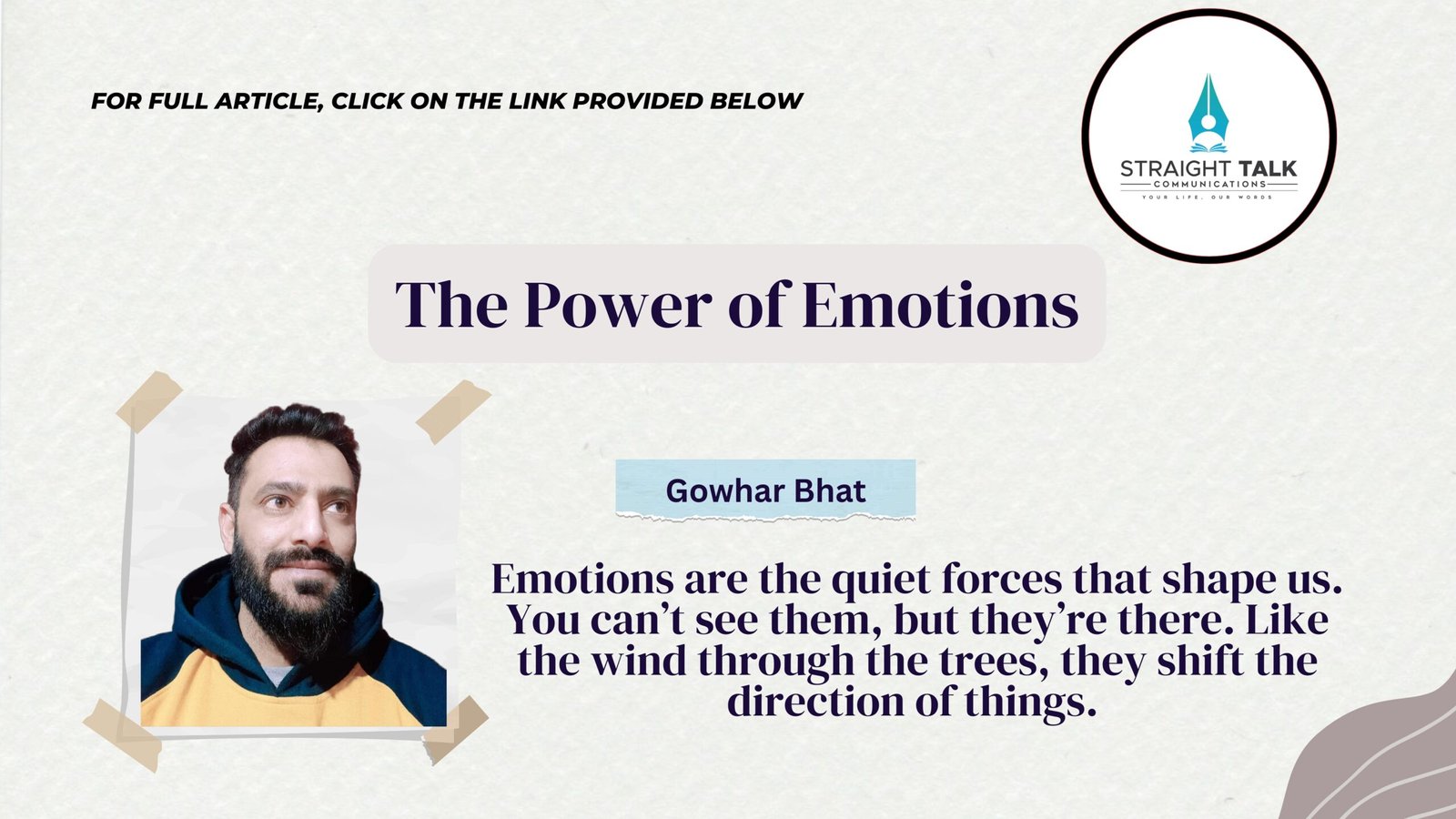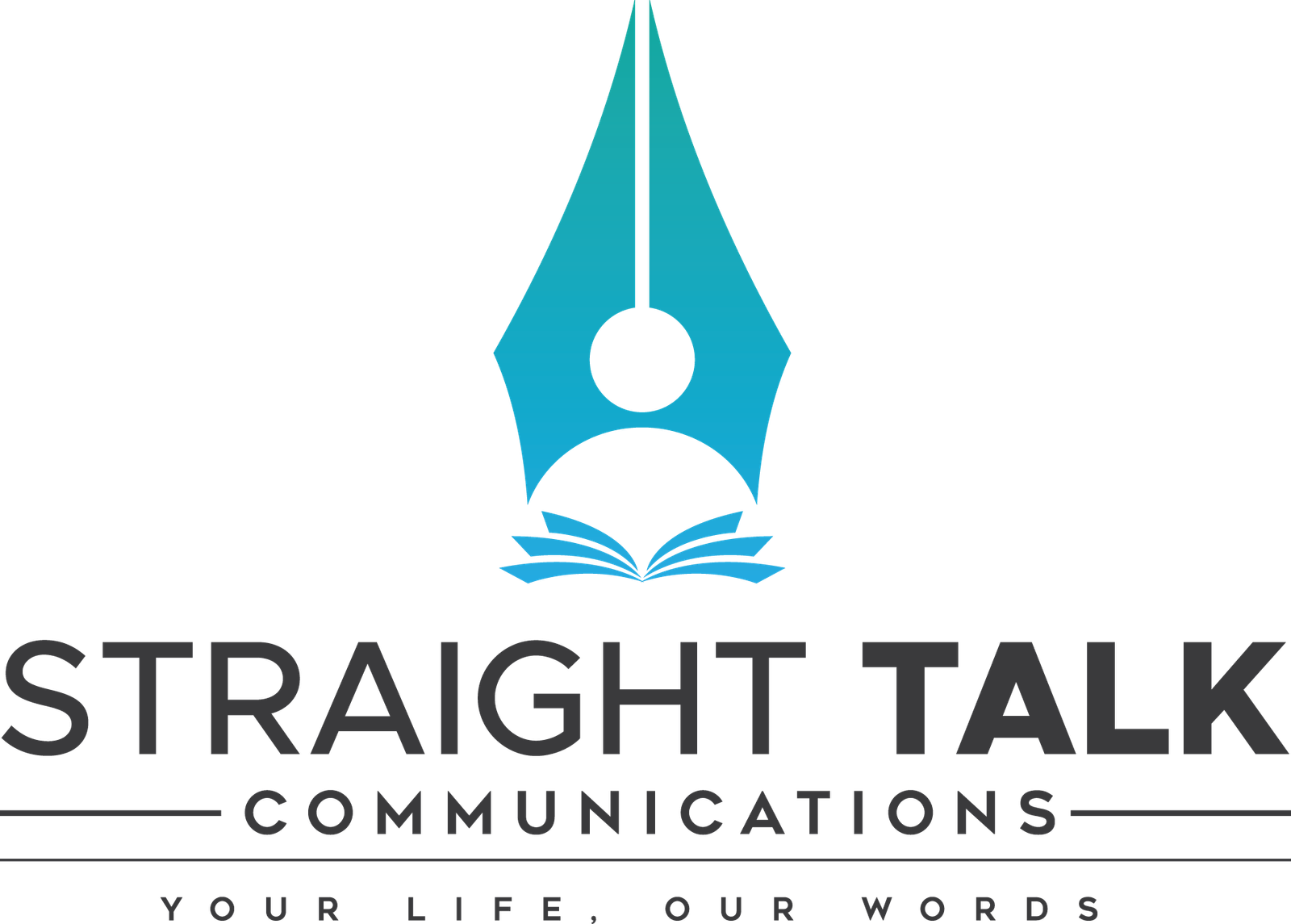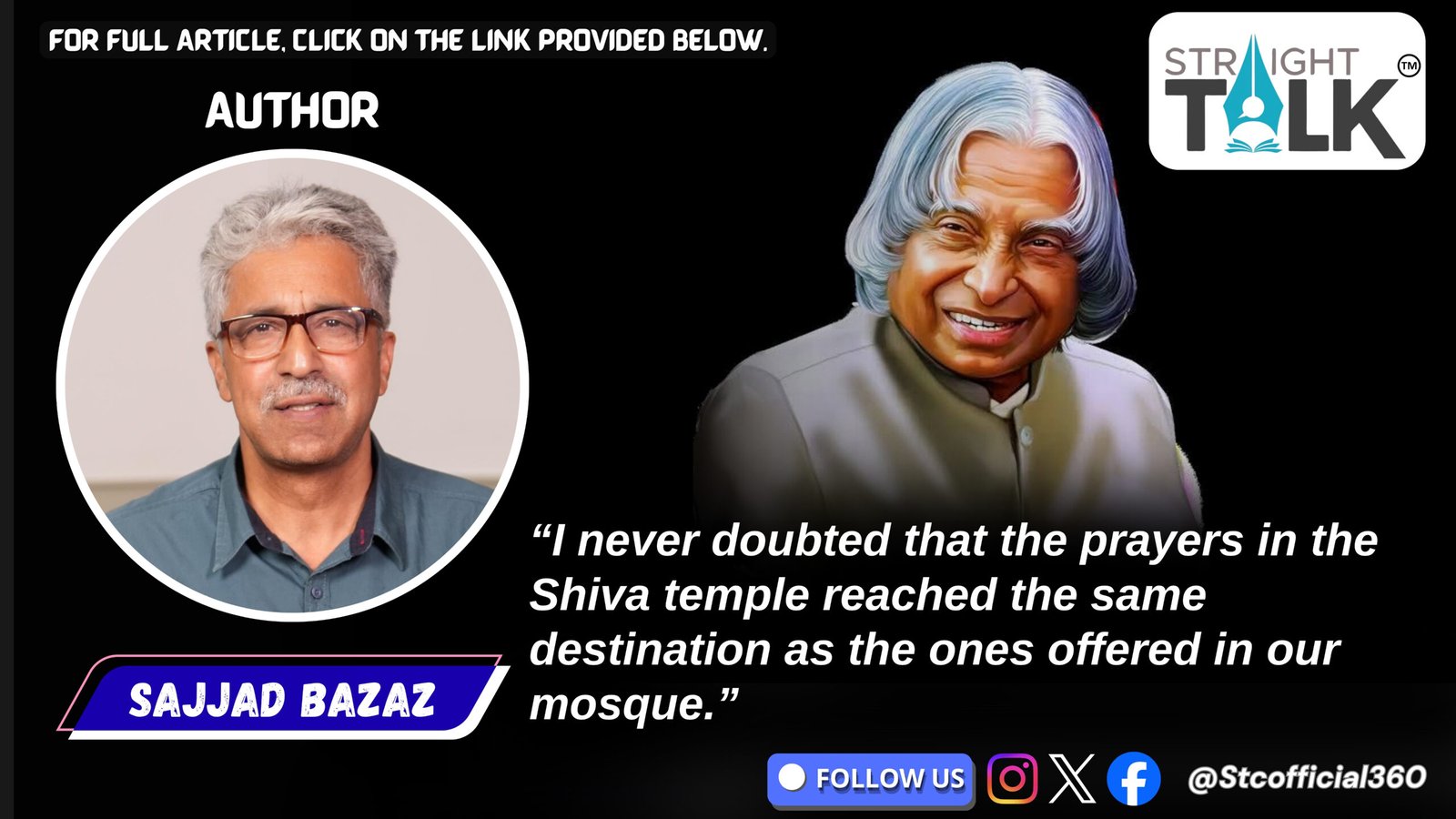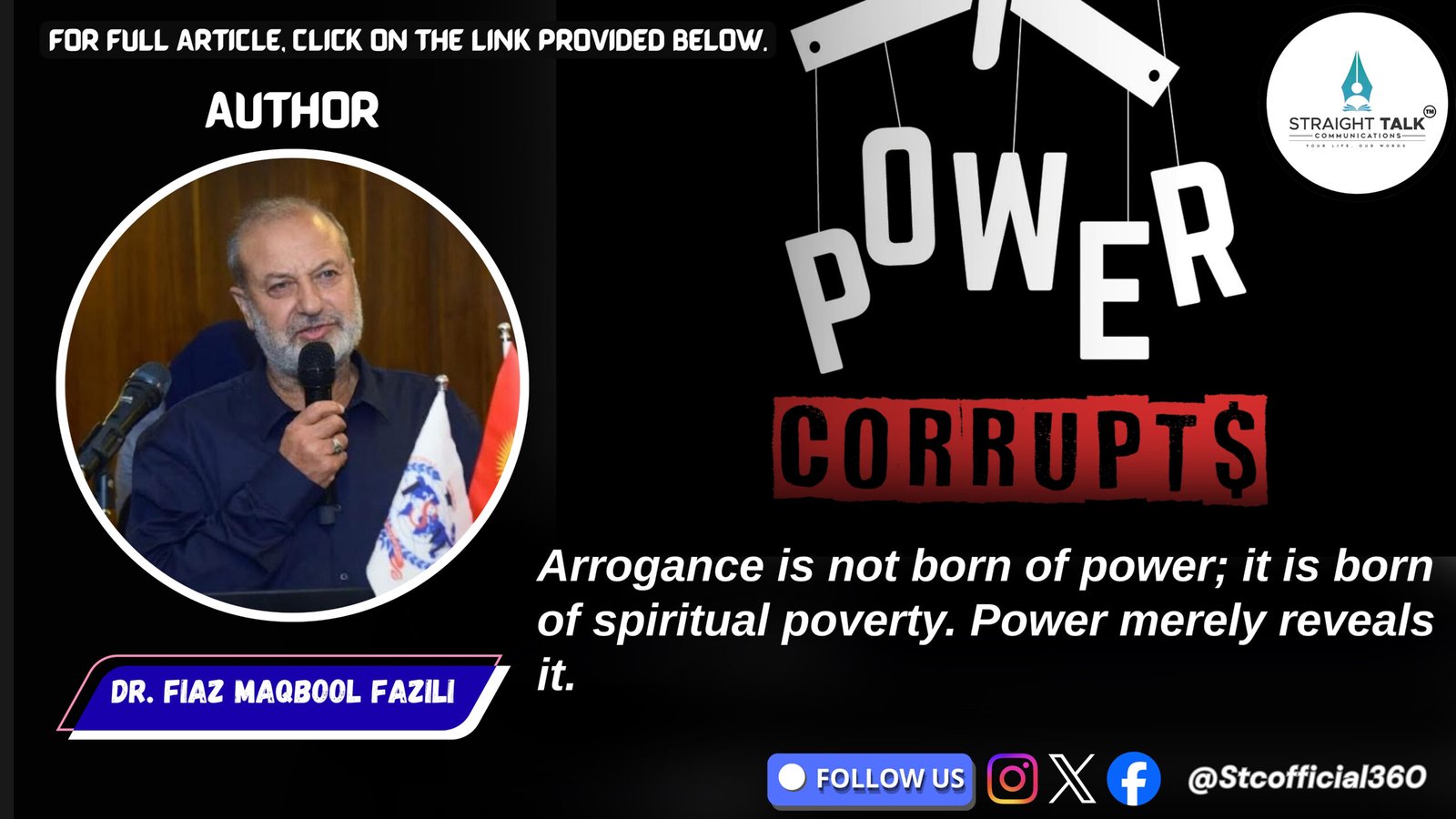The Power of Emotions

The Invisible Force That Shapes Our Lives
Gowhar Bhat
Emotions are the quiet forces that shape us. You can’t see them, but they’re there. Like the wind through the trees, they shift the direction of things. They guide us, move us, sometimes undo us. Sometimes they lift us.
You wake up in the morning. Maybe there’s a heaviness in your chest. Or a kind of peace. It matters. That feeling will touch every part of your day. It will decide how you speak to people, whether you pick up the phone, how you look at yourself in the mirror. These are not small things. These are the things that decide the quality of a life.
A psychologist in Delhi once said, emotions are like weather systems in the body. They pass through. But they leave something behind. A warmth. Or a storm. In Boston, another researcher said that if you name a feeling out loud, it loses some of its grip. There’s science behind that. Functional MRI scans show that naming an emotion calms the amygdala, the part of the brain that processes fear and urgency.
We don’t give enough credit to these things. We value logic. But logic often comes second. First, there is the feeling. A man doesn’t take a job only because of salary. A woman doesn’t marry a man just because it makes sense. There’s something else. A tug in the chest. A tightness. A joy.
Emotional intelligence is a way of talking about how we understand these tugs. Daniel Goleman wrote about it. He said it’s about self-awareness, self-regulation, empathy, social skills. These things aren’t glamorous. They’re not easy to measure. But they mean everything. Emotional intelligence isn’t about controlling emotions so much as understanding them. Knowing when to listen to them. And when to step back.
In India, AIIMS ran studies showing people with higher emotional understanding had fewer health problems. Lower blood pressure. Better sleep. In the U.S., Harvard studies linked positive emotional states to longer life expectancy. According to a 2022 report by the American Psychological Association, individuals with higher emotional regulation were 23% less likely to suffer from chronic illnesses like hypertension and diabetes.
Think about that. Emotions, which seem so soft, so private, can lengthen your life. Or shorten it. A calm man might live ten years longer than a man who carries rage. That’s not poetry. That’s medical data.
We carry emotions in the body. That’s not a metaphor. Anxiety becomes tension in the shoulders. Sadness sits behind the eyes. Joy expands the chest. Love makes the hands reach out. The body keeps score. That’s what therapists say. In fact, Dr. Bessel van der Kolk’s work, especially in “The Body Keeps the Score,” confirms that unresolved emotional trauma can embed itself physically, manifesting as pain, inflammation, and fatigue.
And when we ignore our emotions, they don’t go away. They go underground. They become headaches. Or silence. Or sleepless nights. Sometimes, they become illness. That’s not soft talk. That’s data.
But there’s the other side too. The good side. A small moment of kindness can shift the emotional landscape of an entire day. Gratitude can bring rest. Holding someone’s hand in the dark can turn a storm into stillness.
The University of California, Berkeley conducted a study in 2021 on gratitude. People who practiced daily gratitude journaling reported a 27% improvement in sleep quality and a 40% increase in overall psychological well-being. In Bengaluru, NIMHANS (National Institute of Mental Health and Neurosciences) has introduced emotional literacy programs in urban schools. Early results show reduced incidents of bullying and better peer relationships.
We underestimate the everyday power of emotions. A teacher’s tone. A parent’s silence. A stranger’s smile. These moments stick. They ripple. Sometimes they stay for years. Emotions don’t just pass through us; they shape memory. They make a day memorable. Or forgettable.
Even in ordinary things—drinking tea in the morning, walking to the store, talking to a neighbor—emotions hover nearby. They shape how we see the world. If we’re sad, the world looks gray. If we’re at peace, even the wind sounds like music. This is the invisible lens we carry.
There’s a study from the University of Michigan that examined the emotional backgrounds of creative professionals. It found that emotional intensity—not necessarily trauma, but depth—was a strong predictor of long-term creative output. Emotion fuels creation. The most moving stories are the ones soaked in feeling.
A writer writes best not when they’re clever, but when they’re honest. A painter’s brush carries more weight when the heart is behind it. Songs that last for generations are written in moments of longing, not just technique. Emotions aren’t a byproduct of art. They are the source.
We live in a world where people are learning to talk more about emotions. Mental health is no longer a secret. Or at least, not as much as before. That’s progress. People are beginning to understand that you don’t need to be broken to feel deeply. Feeling deeply is part of being alive.
Even in the workplace, emotional intelligence is gaining value. Google’s internal reports show that teams with high “psychological safety”—a term closely linked to emotional openness—are more productive. Employees who feel seen and heard do better work. They stay longer. They trust more.
Children, too, benefit when we teach them about emotions. Some schools now start the day with check-ins. “How are you feeling today?” It seems simple, but it’s powerful. A child who learns to name sadness won’t grow up afraid of it. A child who learns it’s okay to cry won’t hide their heart behind silence.
There’s no finish line with emotions. No final level of mastery. But there is awareness. There is learning. You can practice being gentle with your feelings. You can practice being patient with others’. You can pause before you react. That’s emotional maturity.
To feel is not to be weak. To feel is to be human. Emotions are not noise. They are information. They tell you where it hurts. They tell you what matters. They point toward healing. They open doors.
In the quiet moments of life, when you sit alone and think—what rises? It’s emotion. Not logic. Not strategy. Just feeling. Maybe it’s gratitude. Maybe it’s sorrow. Maybe it’s longing. All of it is valid. All of it belongs.
So live your life with feeling. Listen to the small voice inside. Let yourself be moved by beauty. Let yourself cry when needed. And laugh without apology. Connect. Reach out. Forgive. Say what matters.
In the end, it’s not what we accomplished that defines us. It’s how we loved. How we made people feel. How we responded to the tides within us. That’s the real legacy.
The power of emotions is quiet, but it is absolute. It doesn’t shout. It whispers. And if you listen closely, it will lead you home.
(The author is a published author, freelance journalist, creative writer, and experienced English instructor.)







